Space exploration
[3] The launch of the first human-made object to orbit Earth, the Soviet Union's Sputnik 1, on 4 October 1957, and the first Moon landing by the American Apollo 11 mission on 20 July 1969 are often taken as landmarks for this initial period.Flights to other planets within the Solar System are accomplished at a cost in energy, which is described by the net change in velocity of the spacecraft, or delta-v. Due to the relatively high delta-v to reach Mercury and its proximity to the Sun, it is difficult to explore and orbits around it are rather unstable.For example, the existence of the Van Allen radiation belts was unknown until their discovery by the United States' first artificial satellite, Explorer 1.These belts contain radiation trapped by Earth's magnetic fields, which currently renders construction of habitable space stations above 1000 km impractical.The questions raised by the scientific community are expected to not only give a better appreciation of the Red Planet but also yield further insight into the past, and possible future, of Earth.Such a high failure rate can be attributed to the complexity and large number of variables involved in an interplanetary journey, and has led researchers to jokingly speak of The Great Galactic Ghoul[32] which subsists on a diet of Mars probes.[39] The Russian space mission Fobos-Grunt, which launched on 9 November 2011, experienced a failure leaving it stranded in low Earth orbit.[41] Until the advent of space travel, objects in the asteroid belt were merely pinpricks of light in even the largest telescopes, their shapes and terrain remaining a mystery.Hayabusa was a robotic spacecraft developed by the Japan Aerospace Exploration Agency to return a sample of material from the small near-Earth asteroid 25143 Itokawa to Earth for further analysis.A large majority of the missions have been "flybys", in which detailed observations are taken without the probe landing or entering orbit; such as in Pioneer and Voyager programs.[43] Fortunately, gravity assists through planetary flybys can be used to reduce the energy required at launch to reach Jupiter, albeit at the cost of a significantly longer flight duration.Saturn has been explored only through uncrewed spacecraft launched by NASA, including one mission (Cassini–Huygens) planned and executed in cooperation with other space agencies.Titan holds the distinction of being the only object in the Outer Solar System that has been explored with a lander, the Huygens probe deployed by the Cassini spacecraft.The Deep Impact probe smashed into 9P/Tempel to learn more about its structure and composition and the Stardust mission returned samples of another comet's tail.In order to make such an approach viable, three requirements need to be fulfilled: first, "a thorough asteroid survey to find thousands of nearby bodies suitable for astronauts to visit"; second, "extending flight duration and distance capability to ever-increasing ranges out to Mars"; and finally, "developing better robotic vehicles and tools to enable astronauts to explore an asteroid regardless of its size, shape or spin".Furthermore, using asteroids would provide astronauts with protection from galactic cosmic rays, with mission crews being able to land on them without great risk to radiation exposure.Artemis would be the next step towards the long-term goal of establishing a sustainable presence on the Moon, laying the foundation for private companies to build a lunar economy, and eventually sending humans to Mars.[63] The research that is conducted by national space exploration agencies, such as NASA and Roscosmos, is one of the reasons supporters cite to justify government expenses.[64] It is also argued that space exploration would lead to the extraction of resources on other planets and especially asteroids, which contain billions of dollars worth of minerals and metals.Stephen Hawking, renowned British theoretical physicist, said, "I don't think the human race will survive the next thousand years, unless we spread into space."[68] Author Arthur C. Clarke (1950) presented a summary of motivations for the human exploration of space in his non-fiction semi-technical monograph Interplanetary Flight.[69] He argued that humanity's choice is essentially between expansion off Earth into space, versus cultural (and eventually biological) stagnation and death.Development of large, winged reusable spacecraft capable of carrying humans and equipment into Earth orbit in a way that made space access routine and cost-effective.Assembly and fueling of spaceships in Earth orbit for the purpose of sending humans to Mars with the intent of eventually colonizing that planet.A spaceflight typically begins with a rocket launch, which provides the initial thrust to overcome the force of gravity and propels the spacecraft from the surface of Earth.Some spacecraft remain in space indefinitely, some disintegrate during atmospheric reentry, and others reach a planetary or lunar surface for landing or impact.However, it does not take long for the environmental dynamics of spaceflight to commence its toll on the human body; for example, space motion sickness (SMS) – a condition which affects the neurovestibular system and culminates in mild to severe signs and symptoms such as vertigo, dizziness, fatigue, nausea, and disorientation – plagues almost all space travelers within their first few days in orbit.Space travel can adversely affect the body's natural biological clock (circadian rhythm); sleep patterns causing sleep deprivation and fatigue; and social interaction; consequently, residing in a Low Earth Orbit (LEO) environment for a prolonged amount of time can result in both mental and physical exhaustion.[84] Long-term stays in space reveal issues with bone and muscle loss in low gravity, immune system suppression, problems with eyesight, and radiation exposure.Many past and current concepts for the continued exploration and colonization of space focus on a return to the Moon as a "steppingstone" to the other planets, especially Mars.
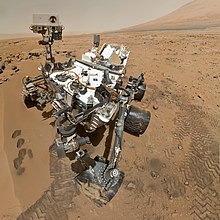

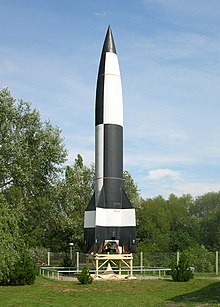

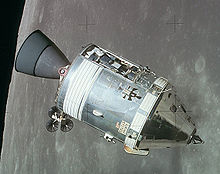
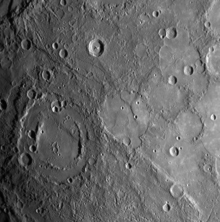






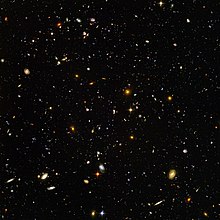

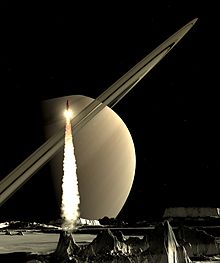
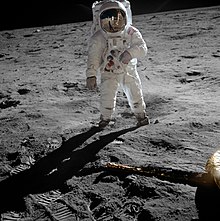



SpaceXExplorationBuzz Aldrincore sampleApollo 11Curiosity roverSpaceflightHistoryHistory of spaceflightSpace RaceTimeline of spaceflightSpace probesLunar missionsMars missionsCommunicationsEarth observationEspionageMilitaryNavigationColonizationHabitationTelescopesTourismSpacecraftRobotic spacecraftSatelliteSpace probeCargo spacecraftCrewed spacecraftApollo Lunar ModuleSpace capsulesSpace ShuttleSpace stationsSpaceplanesVostokSpace launchSpaceportLaunch padExpendablereusablelaunch vehiclesEscape velocityNon-rocket spacelaunchSub-orbitalOrbitalInterplanetaryInterstellarIntergalacticSpace agenciesSpace forcesCompaniesastronomyspace technologyouter spaceastronomersuncrewed robotic space probeshuman spaceflightspace sciencerecorded historyrocketsSoviet UnionUnited StatesSputnik 1Moon landingYuri GagarinVostok 1spacewalkAlexei Leonovfirst automatic landingspace stationSalyut 1Space Shuttle programInternational Space StationSTS-133Constellationan expert review panelArtemis Programfirst mission occurred in 2022Artemis IIIprivate space industrysuccessful crewed spaceflight programChandrayaan programmeEuropean UnionInternational Lunar Research StationLunar GatewayHistory of astronomyDiscovery and exploration of the Solar SystemTimeline of space explorationTimeline of first orbital launches by countryV-2 RockettelescopeNetherlandseyeglassHans LippersheyGalileo GalileiIsaac Newtonhis ownreflecting telescopediscoveries in the Solar Systemnext centuriesmountains of the Moonphases of Venusthe main satellitesJupiterSaturnrings of SaturncometsasteroidsUranusNeptunesatellitesOrbiting Astronomical Observatory 2space telescopeHubble Space TelescopeexoplanetsMilky Wayplanetsgalaxiesobservable universemost distantlight-yearsMW 18014Peenemünde Army Research CenterPeenemündeapogeeKármán line